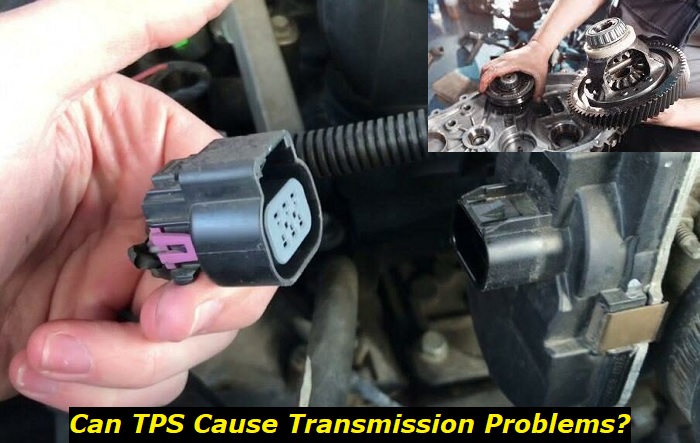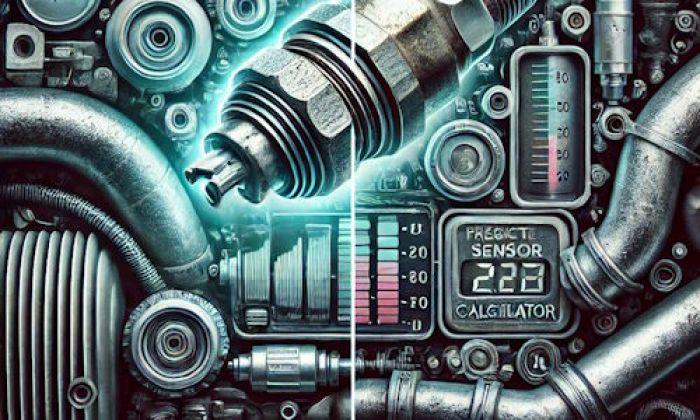While it might seem strange, there are situations in which the transmission will act in a very strange way, even though there isn't an actual problem with it. How? It's quite simple. There are many components in a vehicle that are linked between each other that contribute to the good running of the car.
Automatic transmission malfunction highlights
- Level of importance:Medium
- Reasons:Electronic control problems, shifter issues, sensor-related issues
- Needed expertise:High
- Needed tools:Professional tools set
- Time taken:1-8 hours
- Can you drive? Not recommended
- Possible issues: Fatal damage, overheating, torque converter damage, TCU damage.

What is a throttle position sensor?
In the last few decades, cars have been equipped with all sorts of sensors that help monitor most of their components, one of them being the throttle position sensor, which we'll call simply TPS from now on.
As you might know, vehicles are equipped with throttle bodies (also known as butterfly valves), which are components located between the air filter and intake manifold. Their role is to open and close according to how hard the driver presses the accelerator pedal. This determines how much air, that is required for fuel to burn efficiently, gets into the engine.
What the TPS does is tell the vehicle's ECU (electronic control unit) just how much the throttle body is opened. This helps not only in improving fuel economy but also in improving performance since the air/fuel mixture can always be adjusted for the best possible performance.
How can it cause transmission problems?
Going back to our question, things are much simpler than they might seem. If the vehicle's computer doesn't know how much throttle input there is, how will it know what would be the perfect gear to be in? You might find yourself in unpleasant situations like pressing the accelerator all the way down and the transmission not downshifting at all. Quite nasty, especially if you're trying to overtake another vehicle.
Basically, if the engine and transmission control units have no idea of what the position of the throttle is, you will end up with bad shifting. If this might have made you think that the transmission on your vehicle is gone, the actual cause of your problems might be somewhere else, that's why it's important to always investigate before spending money on fixing things that aren't actually broken.
How to recognize a faulty throttle position sensor?
Faulty throttle position sensors can give you all sorts of running issues, some of them not being related to the way the transmission works. Here are some of the symptoms of a bad TPS:
- Check engine warning light
Ah, yes, the famous check engine warning light. While it can be a cause of many errors, it can also be triggered by a faulty TPS. Performing a diagnostic will usually tell you if it's the case.
- Bad acceleration
You might press the accelerator all the way to the floor and the car won't be moving much faster than it used to. Poor acceleration might also be a sign of a bad TPS since the ECU won't be able to adjust the mixture properly and give you the desired power.
- Rough idle
If the engine is shaking just a little bit too much, or if the idle isn't stable, you might want to consider checking the TPS. While rough idling can be caused by many other factors, a bad TPS can also be one of them.
- Bad fuel consumption
If you find yourself at the gas station way more often than you used to, you might want to take into consideration checking that the TPS in your vehicle is working as it should. Sometimes, it might lead the ECU into thinking that the throttle body is wide open and it will give way more fuel than it's actually necessary.
- Sudden changes in acceleration
This might make you think that you can't keep your foot steady on the accelerator pedal, but don't worry, it's not you, it's the car that's acting up. This is a sign that the TPS is on its last legs and will alternate between working normally and not doing so.
- Transmission doesn't shift properly
Getting back to our main concern, a faulty TPS can cause all sorts of transmission issues. Since the transmission control unit doesn't know exactly how much throttle input there is, it will simply fail to shift gears properly.
For example, you might be driving normally, at low RPM and you might want to accelerate a bit more. Even if your foot is buried into the floor, the transmission still won't downshift and you will find yourself in the most painfully slow acceleration from very low cruising RPM.
You might also get the complete opposite and find yourself driving at 20 MPH, but with 6000 RPM. Another annoying issue could be the hard shifting that you might end up with.
How to fix this problem?
As with pretty much any electrical issue, the troubleshooting process begins with performing a diagnostic. By doing so, you will be able to read the error, which will almost certainly be stored on the vehicle's computer. You can also read live data from the engine and you will probably notice that the throttle position values are off, which might be a solid indicator of what the issue is.
Also, remember to check the wiring and plug of the sensor as well, since it won't do it any harm and that might be the actual reason the sensor doesn't work how it should.
If the TPS proves to be faulty, the only solution you are left with is to replace it. Prices vary from manufacturer to manufacturer, but they aren't usually too expensive.
Replacing the sensor is a pretty straightforward job, as long as you identify it properly and have the right tools to do this job. Any amateur mechanic should have no problem in doing this operation, especially if they use a service manual.
If you feel uncomfortable with doing any of the work yourself, you shouldn't worry, since pretty much any shop will be able to perform a diagnostic on your vehicle and tell you exactly what the problem is and fix it for you, usually not for a huge amount of money.
How to avoid issues in the future?
Since the sensor is fitted to the throttle body, which is part of the air intake of the vehicle, the only thing you can do to prevent issues would be to replace the air filter regularly. This helps to prevent any debris from getting into the intake, potentially affecting important components such as the airflow meter/mass air flow sensor or the throttle position sensor.
Other than that, maybe check the wiring from time to time to make sure that it's not interrupted or that it lacks insulation.
Is it safe to drive like this?
Even though this might not seem such a big deal, we definitely do not recommend you drive for long periods with this issue. Of course, you might think that increased fuel consumption or hard shifting isn't something to be so afraid of, but certain situations might make you rethink what you've just thought.
For example, let's say you want to overtake a slower-moving vehicle that is in front of you. You wait for the right moment to do so, floor the accelerator pedal, and... nothing happens. Your foot is buried into the floor, yet you are moving just as slowly as the vehicle you're trying to overtake.
The only thing that would be worse right now, would be if a car was coming the other way, in which case, the situation would be quite alarming. Still, think it's a good idea to drive with a bad throttle position sensor?
If the TPS prevents the transmission from shifting gears at the right time and you find yourself always driving with a way too high RPM, you should note that this could cause permanent damage to your engine.
Final thoughts
Although it might seem to you that there is no way a throttle position sensor can be related to the way your transmission is shifting gears, you might be in for a big surprise. This component is very important since it tells the ECU and TCU just how much throttle input there is so that the fuel mixture and the way the gears are shifted can be adjusted accordingly.
Transmission issues? Before rushing to a transmission specialist, try a diagnostic first. You might be surprised by the results.
About the authors
The CarAraC research team is composed of seasoned auto mechanics and automotive industry professionals, including individuals with advanced degrees and certifications in their field. Our team members boast prestigious credentials, reflecting their extensive knowledge and skills. These qualifications include: IMI: Institute of the Motor Industry, ASE-Certified Master Automobile Technicians; Coventry University, Graduate of MA in Automotive Journalism; Politecnico di Torino, Italy, MS Automotive Engineering; Ss. Cyril and Methodius University in Skopje, Mechanical University in Skopje; TOC Automotive College; DHA Suffa University, Department of Mechanical Engineering






Add comment